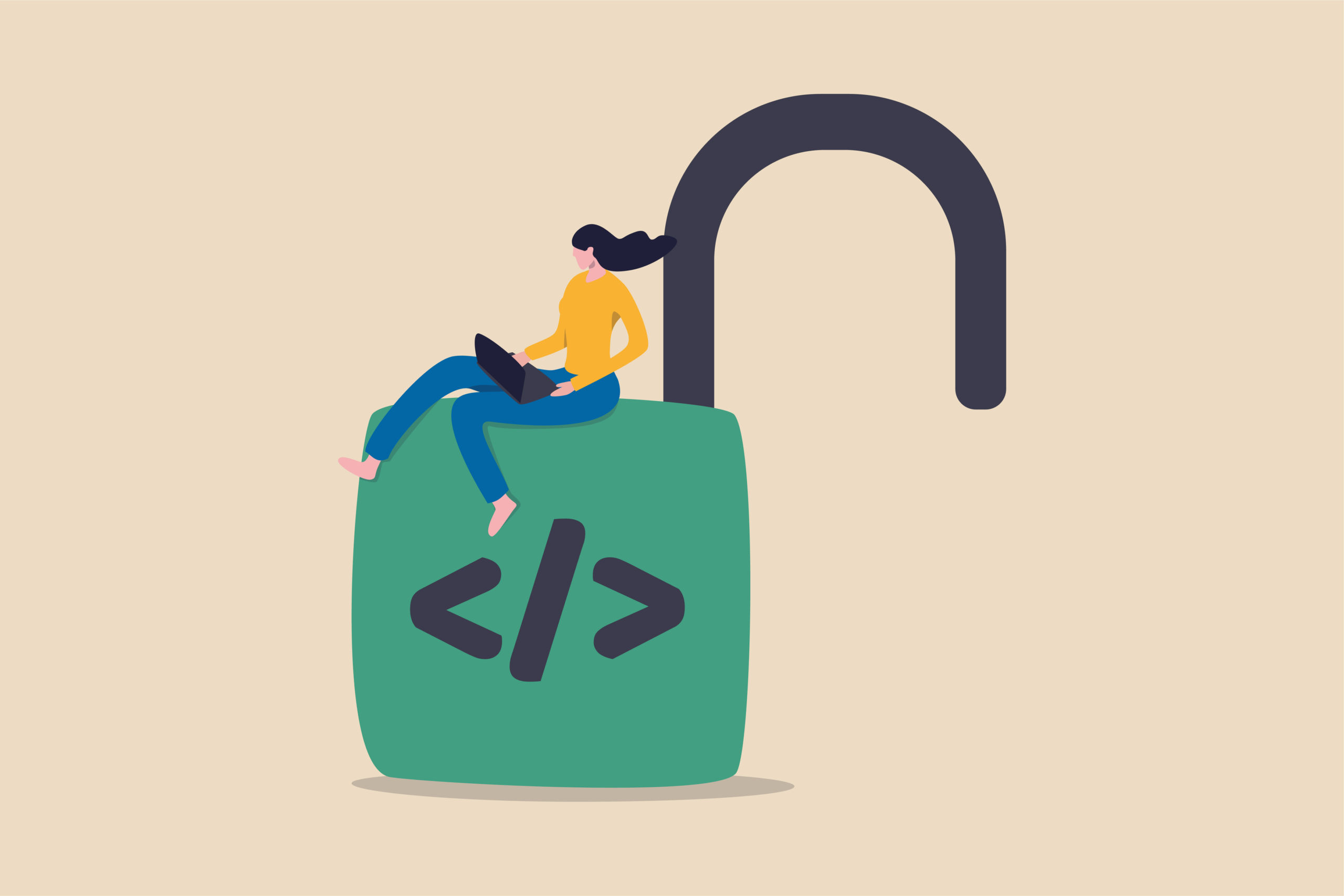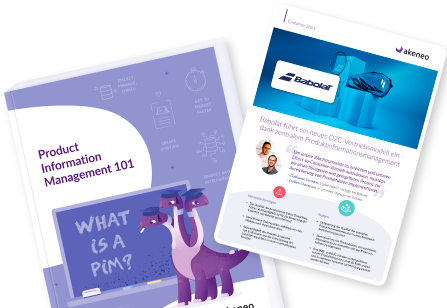Feb 01, 2023
9 min to read
Discover if open source DAM solutions are the right choice for your organization, and how open source DAM software's scalability, customization abilities, and cost-effectiveness can potentially impact your organization.

For most software companies, proprietary licensing is big business. Organizations buy the rights for one, ten, or a hundred copies of the software. It’s delivered and deployed, and there’s no need for developers—the source code is protected by all sorts of legalese and restrictions.
But there’s another way: open source software.
Today, open source is everywhere. Some of the most well-loved programs are open source, including the Mozilla Firefox web browser, Linux operating system, VLC Media Player, and, of course, Akeneo. It’s even made its way to some of the most commonly used business solutions: digital asset management software.
Digital asset management software helps you organize, track, and share your digital assets across the entire content lifecycle. Digital assets include anything that is needed to identify, market, and sell your products, including written descriptions, photos and images, videos, logos, graphics, and typefaces. DAM can also include sales presentations, RFPs, spreadsheets and other documents, as well as product data like design files and models.
DAM software provides a single point of access to all of your organization’s digital assets, across departments and around the globe. It often integrates with your product information management (PIM) software, supplying the assets needed to market and sell your products. Integration between PIM and DAM is ideal: it allows organizations to increase efficiency, improve the customer experience, and boost revenue.
No matter how you choose to use it, DAM is quickly becoming an essential tool for large enterprises with many products and a lot of digital content.
There are many different types of DAM software: open source or proprietary, cloud-based or on-premise, integrated with PIM or stand-alone. However there are several core features that exist in top-of-the-line DAM software tools.
When your digital asset management software has all of these features, it becomes a true “hub” where your teams—particularly marketing and sales—can find what they need, when they need it. That leads to numerous benefits, such as:
Open source digital asset management software simply means that the source code is publicly available. All users can access and make changes to the source code, like adding or removing certain features or integrating it with their existing ecosystem.
The opposite of open source software is called proprietary software. Users can’t see or modify the source code in proprietary software, so the only customizations available to them are those set by the vendor. Because SaaS operates in the cloud, it has traditionally been proprietary, and doesn’t provide users with any executable files. Open source SaaS aims to change that by allowing the user to choose between customization or a more traditional model.
The fact that you can see and modify the code of open source digital asset management solutions gives certain businesses many advantages, including greater agility and creativity, which can be especially valuable for larger organizations. While not perfect for every organization, an open source DAM tool can offer certain functionality that a traditional commercial offering often can’t.
Customization
The biggest benefit of open source DAM solutions is their customizability. With access to the source code and files, programmers can build or remove nearly any feature they desire; you can create your own workflows, integrate with your existing technology, exercise more control over how files are stored and shared, and more. It’s the best option for organizations with specific needs.
Scalability
Content is still king: There are more channels, content types, and personalization options than ever before. Many organizations are managing hundreds of millions of digital assets with increasingly large file sizes, making the scalability of open source DAM software a big plus. Because you can create your own workflows and decide how you will store and manage your files, you won’t be boxed in as your organization—and your digital asset library—grows.
Innovation
Open source software attracts a community of like-minded programmers with a common interest: To make the program as useful as possible. Yet this community will also come from a wide variety of backgrounds, industries, and experiences, bringing different perspectives that can help accelerate innovation and create DAM software that is a leader in its space.
Support
The same community that provides constant innovation and new ways of thinking also doubles as a support team. Many open source DAM systems have active, highly collaborative communities that provide guidance and help each user get the most from the software. Thanks to hundreds or thousands of programmers working together, open source software also releases bug fixes faster than proprietary software, which only has a small team of support specialists.
Lower cost
Because SaaS is cloud-based, it’s lower-cost than hosted data centers, which require on-premises hardware and large IT teams. Open source SaaS is even more affordable, as there typically aren’t any licensing fees. While you’ll likely still pay for storage, proprietary software comes with both storage and licensing costs. And because open source DAM solutions are so customizable, you’ll also save resources through efficiency.
More choices
Most open source DAM software today has an “out-of-the-box” version that can be set up quickly and easily. From there, you can choose to use the default features without making any changes, or you can leverage the open source licensing to customize your solution. That makes it a good choice for both smaller organizations, who may want the ability to customize in the future, as well as larger organizations who need to hit the ground running, but also want the ability to make changes.
Though helpful for many organizations, open source DAM solutions are not the right for every team. Let’s take a look at a few reasons why a commercial DAM tool may be a bitter fit for your business.
No personalized support
Though open source software often comes with an extensive network of developers to rely on, there is no direct support or service team there to support you if you have questions or concerns. That means no user manuals, no tutorials, no support reps, and that can be quite daunting to a team that may not be the most technically adept.
Usability
Often, commercial DAM tools are easier to use and have better UX design because they will have teams dedicated to this purpose. On the flip side, open source solutions are often built by developers who focus on functionality rather than usability, so even though it may technically be able to resolve the issue you’re looking to fix, it may be overly-complicated or require more time to set up and learn.
Potential security risks
One of the best benefits of open source technology is that it’s collaborative and open in nature; but that’s also one of its biggest potential pitfalls. With literally anyone able to update the code at any time, there’s always the risk that someone comes in with malicious intent. Though it’s rare, it’s something that does happen, and is something you should take into serious consideration when evaluating DAM tools.
So what’s the best digital asset management software: open source or proprietary? While the answer depends on what your organization is looking for; while open source DAM technology may fit your needs best, it’s not for everyone, and you should explore all options before making a decision.
At Akeneo, our PIM software has been a native OpenSaaS cloud application since 2017, deployed on the secure, reliable Google Cloud platform. Our API-first approach means you can easily connect your DAM software to our PIM and integrate other technology, too, for an omnichannel product activation strategy that provides a seamless customer experience from start to finish. If you’re ready to learn more, check out our article on how open source PIM and DAM systems work together and why this integration could be the foundation of your success.
Sign up for our newsletter and stay ahead of the curve on everything you need to know about product information management, product experience management and how to unlock growth for your organization.
